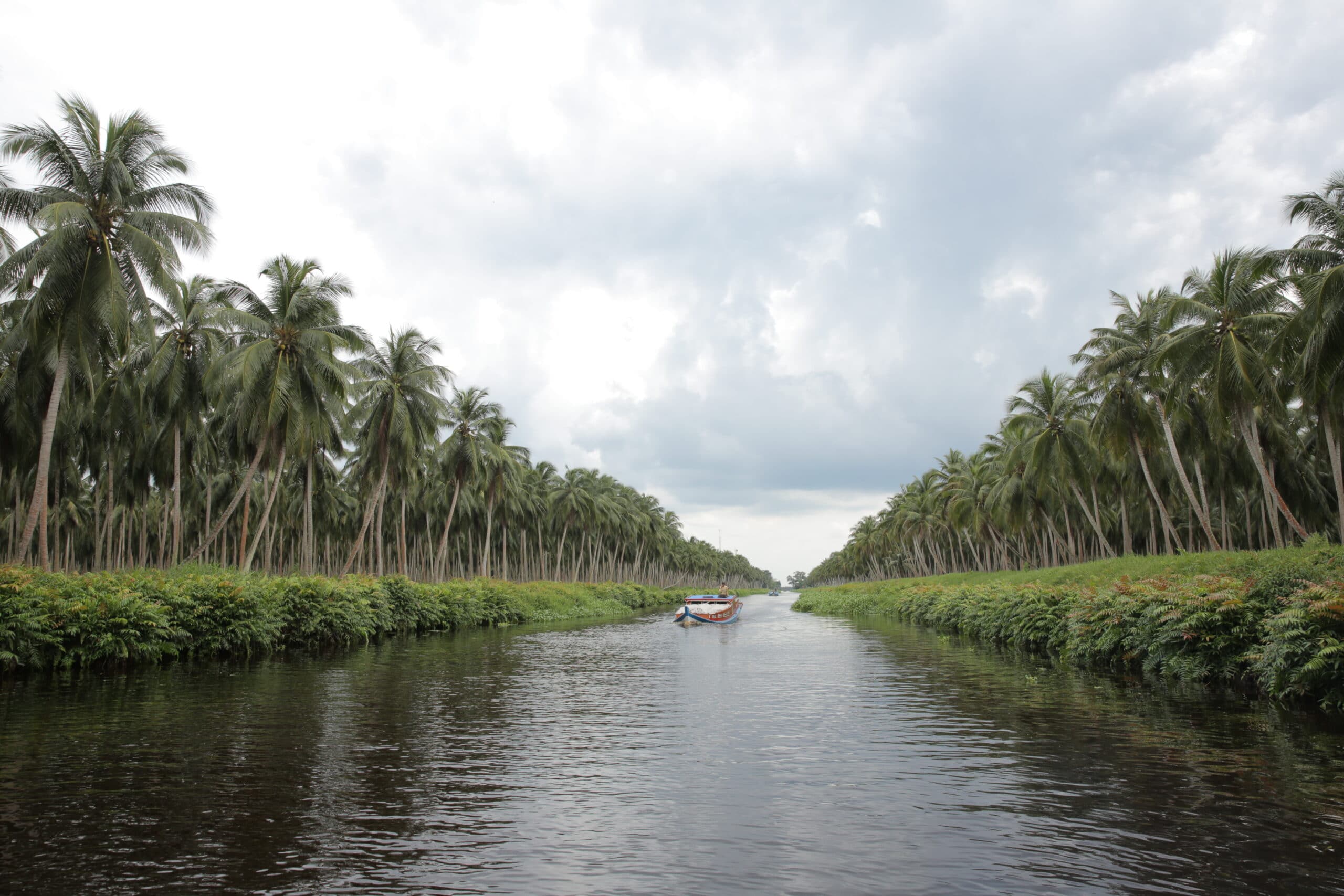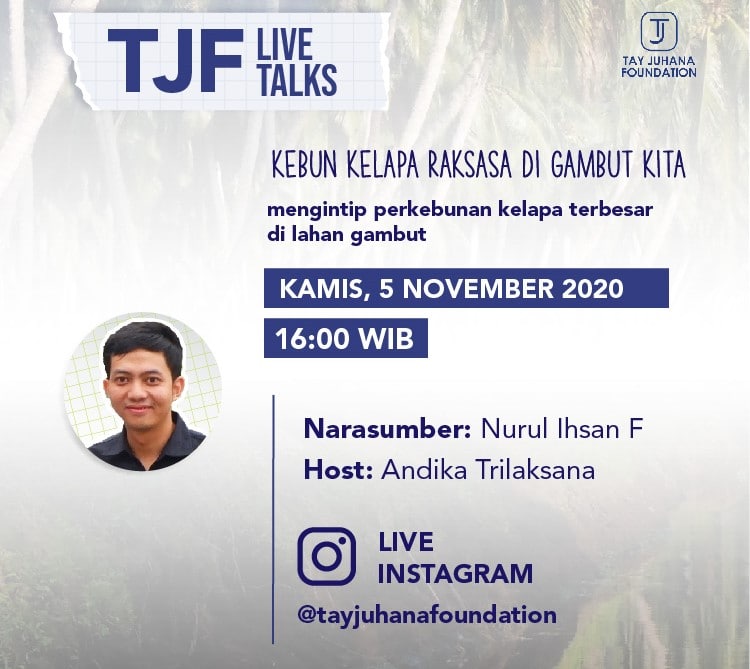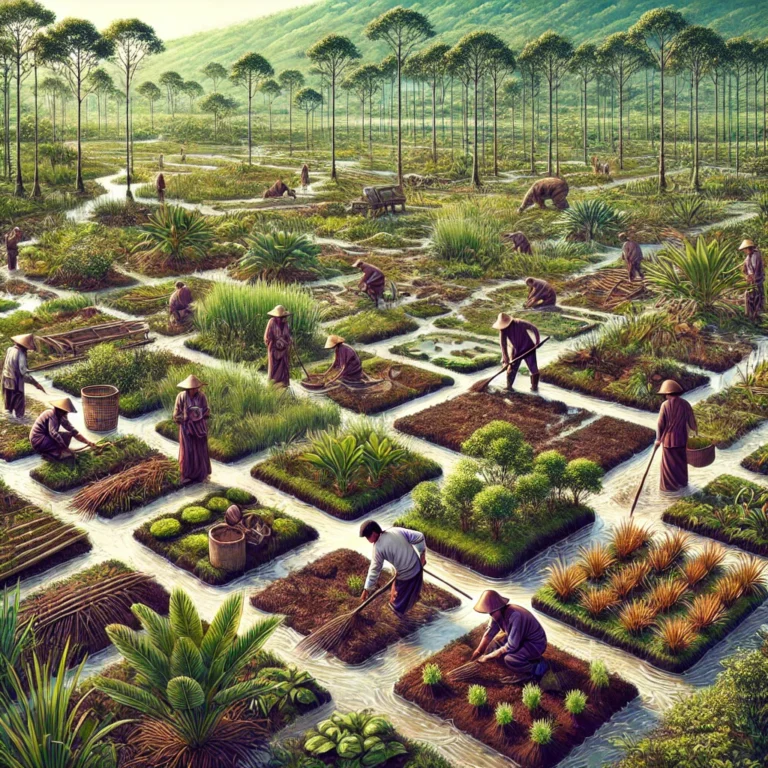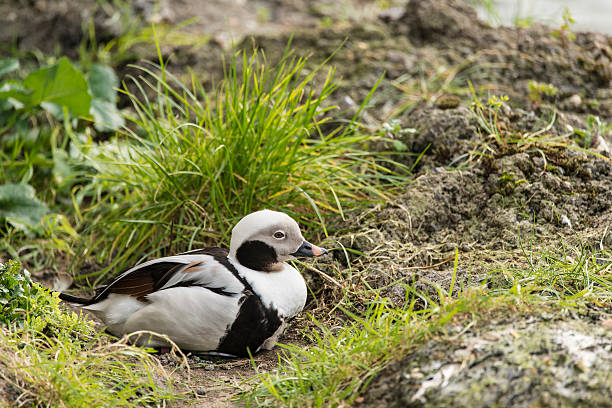Began with an elaboration on the definition of suboptimal land, this online discussion presented a TJF researcher, Nurul Ihsan Fauzi. Ihsan explained that in simple words, suboptimal land is less fertile land such as peatland. This live talk focused on a discussion about the results of research on coconut plantations on peatlands.
Since so many lands were being used for modernization, there is a concern about whether food security is sufficient to meet human needs in the future. Therefore, peatlands began to be used for farming. Cultivating peatlands is like a double-edged sword; if appropriately handled, peatlands can be a solution for food security, but if they are not handled properly, they can cause negative impacts. Good management is needed so that the sword does not stab us.

It is not easy to manage peatlands, but it is not impossible. Several factors that must be considered include environmental, social, and economic factors. All of these factors must go hand in hand in order to achieve sustainability, not only last for 1 or 2 years. This sustainable practice has been conducted in one of the coconut plantations on Burung Island. Apart from having a good impact on the surrounding community, this practice also does not damage the environment.
The most important thing to achieve the success of suboptimal land management, in this case, peatland, in a sustainable way is to pay attention to water management. Good water management and in accordance with government regulations can maintain soil moisture. Besides being able to maintain carbon emissions, humidity can also prevent forest fires, considering that peatlands are very susceptible to fire. This is proven by the coconut plantation on Burung Island, which has been around for about 50 years and is one of the largest producers of coconut products.






